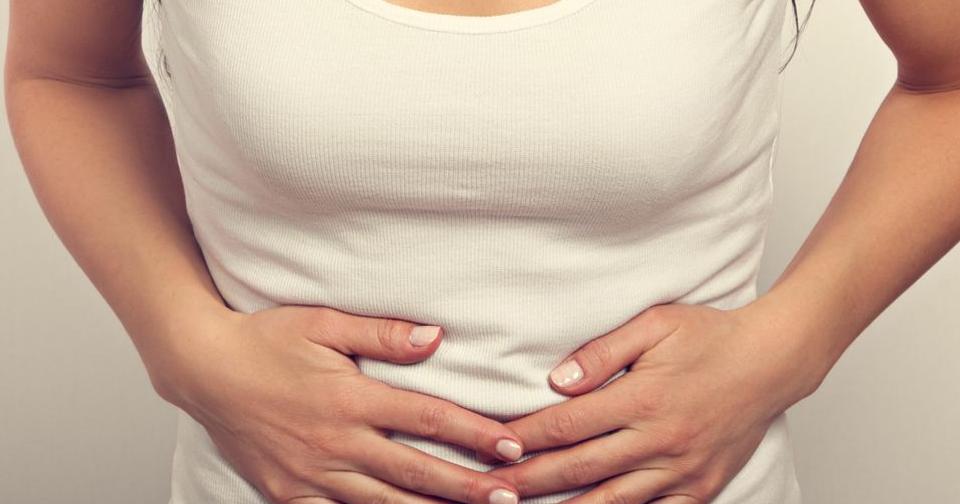Guide To Gastritis Symptoms
Gastritis, also known as dyspepsia, is a medical condition that causes irritation and inflammation of the stomach lining. In severe cases, gastritis can lead to erosion of the stomach lining as well. The condition may be either acute or chronic, and it can affect individuals of any age. Recognized causes of gastritis include excessive alcohol consumption and overuse of nonsteroidal anti-inflammatory medications. The ailment can also develop due to bacterial infections (including the H. pylori infection) and injuries. Patients with Crohn's disease or sarcoidosis are at an increased risk for gastritis. Since the stomach lining naturally becomes thinner with age, seniors have an elevated risk of the condition too. The symptoms outlined below commonly occur with gastritis, and patients who have these should visit their doctors for prompt evaluation.
Abdominal Bloating And Pain

Abdominal bloating and pain are some of the first and most noticeable symptoms of gastritis. Patients with the condition may notice a sensation of fullness after eating, and pain is most common in the upper abdominal area. Patients who visit the doctor for an investigation of abdominal bloating and pain will be asked about the location, frequency, and duration of these symptoms. It can be helpful to keep a symptom tracker before and between doctor's appointments. The doctor will perform an abdominal examination, listening to bowel sounds with a stethoscope, tapping lightly on the stomach area, and gently palpating the abdomen for any masses or areas of concern.
Learn more about the symptoms of gastritis now.
Recurrent Upset Stomach

Recurrent upset stomach is frequently associated with gastritis and other stomach conditions. Upset stomach includes a cluster of symptoms such as indigestion (heartburn), nausea, and general discomfort in the stomach. Recurrent upset stomach often occurs after a meal, and some patients may experience this several times a week and as often as multiple times a day. In some cases, an upset stomach may cause patients to vomit. Since this may be a symptom of a more serious medical issue, it is important for patients to visit their doctors promptly if they find themselves dealing with a recurrent upset stomach.
Continue reading for additional details about the various symptoms of gastritis now.
Indigestion

Indigestion, more commonly referred to as heartburn, can have many triggers, such as diet. Patients who eat processed foods such as salami, sausage, and other smoked or cured meats may find it increases their symptoms. Spicy foods and acidic foods such as tomatoes are also common triggers. Some patients find relief with the BRAT diet, which involves eating foods that are easy to digest such as bananas, rice, applesauce, and toast.
In addition, heartburn can be treated with antacids and proton pump inhibitors. Antacids reduce stomach acid, and some can also reduce gas and bloating. Potential side effects from antacids vary depending on the type of antacid and may include swelling in the feet and hands, belching, and constipation. Proton pump inhibitors work by reducing the amount of stomach acid that the body manufactures. Potential side effects include diarrhea, constipation, nausea, headaches, and itching. Patients using proton pump inhibitors for a long time may experience additional effects such as infections and an increased risk of bone fractures. Occasionally, patients taking antacids and proton pump inhibitors may experience an increase in stomach acid.
Reveal the next sign of gastritis now.
Loss Of Appetite

The pain, nausea, and other symptoms caused by gastritis may sometimes result in a loss of appetite. Patients who experience this should keep a diary of how often their loss of appetite occurs and share the information with their doctors. These patients may wish to explore dietary alternatives and easily digested foods. Crackers, rice, broths, green vegetables, and potatoes may be easier on patient's stomachs and enable them to get sufficient calories and nutrition. Patients may need to take vitamin and mineral supplements to prevent malnutrition, and they should consult their healthcare team for guidance about proper doses. Patients may need to take oral electrolyte supplements to avoid electrolyte imbalances as well. Nutritionists with training in gastritis can help patients design an eating plan that works for their condition and makes eating less painful.
Get the details on the next gastritis symptom now.
Gnawing In The Stomach

Gnawing in the stomach can be a result of the excessive acid and stomach lining damage that occur with gastritis. Typically, patients with gastritis feel the gnawing sensation in the upper portion of the abdomen. Some patients may find the gnawing is alleviated with eating, but for others, eating may increase gnawing sensations. Therefore, patients may wish to eat a small snack when they experience gnawing to see how food affects this. Low-acid foods such as potatoes, oatmeal, white rice, and bananas are generally easy to digest. Pain relievers and antacids can help reduce gnawing sensations. If the gnawing becomes worse or feels different than usual, patients should consult their healthcare team.
Read more about the symptoms linked to gastritis now.
Severe Vomiting

Gastritis occurs when an individual's stomach lining becomes inflamed and damaged due to certain lifestyle choices, diet, certain medications, and other medical conditions or diseases. Vomiting can occur with gastritis because the nerve endings in the tissues around the stomach can become irritated and induce the activation of the nausea center in the brain. The underlying cause of an individual's gastritis can be the reason for symptoms like nausea and vomiting. Gastritis caused by the population of bacteria, fungi, and viruses is known to be associated with vomiting, as is gastritis caused by stomach tissue exposure to radiation. In cases of untreated advanced gastritis, a patient may experience bleeding in the stomach from the lining becoming ulcerated and damage to the blood vessels that feed the lining. Blood contains a significant quantity of iron, and blood in the stomach from gastritis can cause severe vomiting because the body is unable to manage large amounts of iron.
Keep reading to learn more about the warning signs of gastritis now.
Tar-Like Stool

Many of the underlying causes of gastritis can cause patients to experience damage to the blood vessels that supply the lining of the stomach with oxygenated blood. Some of these causes include excessive stomach acid production, drinking too much alcohol, long term use of nonsteroidal anti-inflammatory drugs, and autoimmune disorders. When blood leaks from the damaged blood vessels in the lining of an individual's stomach, it will continue to move through the digestive tract if it is not excreted through vomiting. As blood from the stomach moves through the small and large intestine, it starts to clot due to the amount of time it has been outside of the bloodstream. This clotted blood combines with stool and is then excreted from the individual's body. The partially clotted blood in the stool can cause it to have a black or dark brown tar-like appearance.
Uncover additional symptoms of gastritis now.
Hiccups

A hiccup is a sudden contraction or spasm of the diaphragm. This spasm produces a shaking motion of the individual's chest and abdominal muscles and the closing of the glottis immediately after. When individual experiences this mechanism, they generate a sound of air being forcibly expelled from their lungs that is characterized as a hiccup. Hiccups can be triggered when the stomach of a gastritis patient becomes enlarged from swelling. Hiccups may also be triggered when an individual's throat or esophagus becomes swollen from an overproduction of stomach acid that has caused gastritis. These causes of hiccups may occur because the brain has sensed a decrease in carbon dioxide levels in the blood. The mechanical action of vomiting that is caused by gastritis can produce irritation in an individual's phrenic nerve, the nerve that connects the diaphragm to the brain, which can trigger hiccups.
Get more information on the warning signs linked to gastritis now.
Belching

Belching describes when air is expelled from an individual's stomach back up into their mouth. Belching occurs when an excessive amount of gas is produced in an individual's digestive tract or when they swallow too much air. A large number of individuals with gastritis have developed this inflammation because of a Helicobacter pylori bacteria infection. This bacteria invades an individual's digestive tract and grows out of control. The H. Pylori bacteria consume glucose and other substances in the food an individual consumes, and this process produces byproducts in the form of gas. This gas in the stomach can cause it to become distended and produce pain and discomfort. The stomach uses the mechanism of belching to release the excess air produced by the bacteria or another pathogen that has invaded the stomach tissues.
Reveal additional symptoms of gastritis now.
Sweating And Pallor

Pallor is a term used to describe when the shade of an individual's skin appears to be more pale than usual. Pallor can also describe when an individual has an unusually pale coloring on the mucous membranes in their mouth, on their lips, and in the linings of their eyes. Sweating is a mechanism used by the body to rid itself of excess heat by releasing fluid on the skin the air absorbs, taking heat with it. However, sweating can also manifest in an individual who has a fever. Individuals who have severe gastritis that has resulted in anemia from excessive stomach bleeding may also present with pallor and clammy skin due to an absence of oxygenated blood being delivered to the outer layers of their skin tissues.